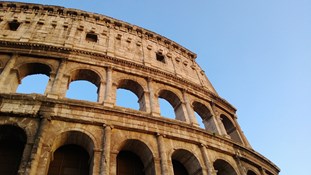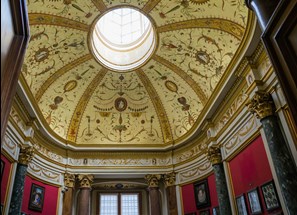|
This small soccer mad nation, with its countless historical sites, gorgeous cities, stunning food, friendly locals, and beautiful scenery is probably one of the most popular travelling destinations in the world.
In fact, you could go to Italy on holidays for the next 30 years, and still not see everything there is or taste even a fraction of all the delicious foods.
|
|
Get your visas in order, make sure you have appropriate travel insurance for Italy, and go explore this beautiful Mediterranean country that gave us Pizza, Pasta, and Espresso.
What to do in Italy:
If Greece is the birthplace of modern, western civilization, then Italy would be everything from kindergarten to university. Ancient Romans took Greek culture, philosophy, science and art and transformed it with their own ideas to create the culture we have today.
Italy's cultural and historic heritage is immense, and it is the country with the highest number of UNESCO World Heritage Sites in the world. Truly, wherever you look, there is something to see, and somebody probably wrote about it too!
|
Rome:
Rome is the capital and an absolutely amazing city, perhaps one of the world's most romantic cities too! From the huge squares, the tiny cobbled roads, the smell of coffee and good food, the amazing nightlife, and the Vatican, there is enough to see and do in Rome to fill an entire holiday or several.
The nice thing is that the monuments are scattered around town and form part of one urban fabric.
|
 |
Italy and its cities are usually very safe for travellers, it’s best to watch out for petty crime and purse-snatchers though.
Colosseum:
The Colosseum and Forum Romanum should be on everybody's list - they are astonishing sites. You truly get a sense of ancient Roman culture and gain a lot of respect for what they were able to build without even so much as a power tool!
|
 |
The Vatican:
The Vatican is, technically speaking a state of its own, but it is also conveniently located within Rome. St Peter's square is mesmerizing in scale and scope, and the number of artworks and statues in this area must be in the thousands.
If you had to pick one thing to see in the Vatican, head to the Sistine Chapel.
|
 |
Not only is it a true masterpiece of technique, skill and imagination, it has recently been fitted with hundreds of LED lights, making it more visible than it ever was before!
Venice:
The most traditional destination for a romantic getaway is Venice. This city is an engineering marvel, with every single building being built on stilts. The architecture and monuments will keep you busy for a while, as will finding them, but if you have some time to spare make sure to explore the surrounding islands, such as Murano.
Murano is a series of islands that are famous for their glass production, and seeing a man shape a prancing horse out of a molten blob of sand in 30 seconds is quite the sight to behold.
|
 |
Florence:
Florence is also a firm favorite with travellers. The Palazzo degli Uffizi houses probably one of the most important and valuable collections of classic art in the world. The Doumo and its surrounding area are home to many museums and palaces that are well worth checking out.
To have a real Italian experience make sure to sit in a coffee shop and see the world go by while looking sophisticated and sipping on an espresso.
|
 |
Tuscany:
But Italy is not only about big cities, the countryside has as much to offer. Around Florence is the Tuscany region that is home to many smaller, gorgeous medieval cities, such as San Gimignano, Pisa, and Siena.
North of Tuscany is the Piedmont, which is famous for its wines and the truffle season in September, when every town in the Piedmont smells of, and sells the famous fungus.
As a general travel precaution, buy travel insurance for Italy before starting your trip.
|
 |
For more information on Italy, visit the Italy Tourism Website.










